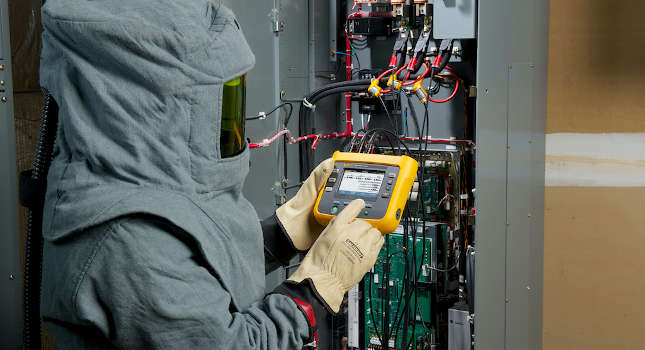Anyone who makes their living by working with electricity quickly develops a healthy respect for anything with even a remote chance of being “live.” Yet the pressures of the getting a job done on time or getting a mission-critical piece of equipment back on line can result in carelessness and uncharacteristic mistakes by even the most seasoned electrician.
Anyone who makes their living by working with electricity quickly develops a healthy respect for anything with even a remote chance of being “live.” Yet the pressures of the getting a job done on time or getting a mission-critical piece of equipment back on line can result in carelessness and uncharacteristic mistakes by even the most seasoned electrician. The following list is a quick reminder of what not to do when taking electrical measurements:
1. Replace the original fuse with a cheaper one. If your digital multimeter (DMM) meets today’s safety standards, that fuse is a special safety sand fuse designed to pop before an overload hits your hand. When you change your DMM fuse, be sure to replace it with an authorized fuse.
2. Use a bit of wire or metal to get around the fuse all together. That may seem like a quick fix if you’re caught without an extra fuse, but that fuse could be all that ends up between you and an electrical spike headed your way.
3. Use the wrong test tool for the job. It’s important to match your DMM to the work ahead. Make sure your test tool holds the correct CAT rating for each job you do, even if it means switching DMMs throughout the day.
4. Grab the cheapest DMM on the rack. You can upgrade later, right? Maybe not, if you end up a victim of a safety accident because that cheap test tool didn’t actually contain the safety features it advertised. Look for independent laboratory testing.
5. Leave your safety glasses in your shirt pocket. Take them out. Put them on. It’s important. Ditto insulated gloves and flame-resistant clothing.
6. Work on a live circuit. De-energize the circuit whenever possible. If the situation requires you to work on a live circuit, use properly insulated tools, wear safety glasses or a face shield and insulated gloves, remove watches or other jewelry, stand on an insulated mat and wear flame-resistant clothing — not regular work clothes.
7. Fail to use proper lockout/ tag-out procedures. Enough said.
8. Keep both hands on the test. Don’t! When working with live circuits, remember the old electrician’s trick: keep one hand in your pocket. That lessens the chance of a closed circuit across your chest and through your heart. Hang or rest the meter if possible. Try to avoid holding it with your hands to minimize personal exposure to the effects of transients.
9. Neglect your leads. Test leads are an important component of DMM safety. Make sure your leads match the CAT level of your job as well. Look for test leads with double insulation, shrouded input connectors, finger guards and a non-slip surface.
10. Hang onto your old test tool forever. Today’s test tools contain safety features unheard of even a few years ago, features that are worth the cost of an equipment upgrade and a lot less expensive than an emergency room visit.
Adapted from the Fluke Digital Library , Fluke Corp.



